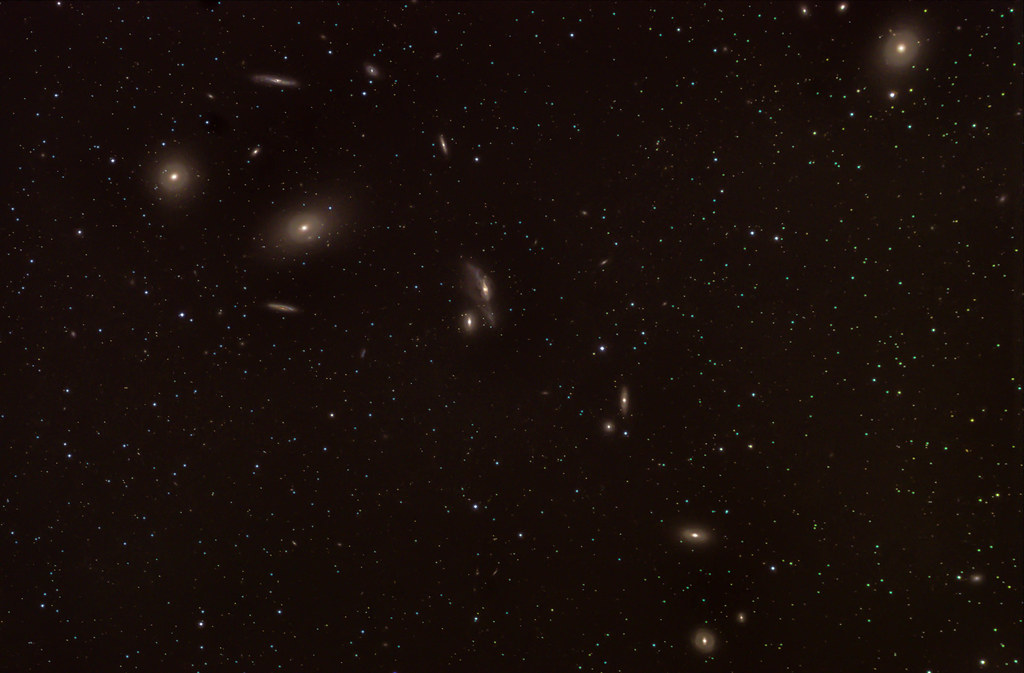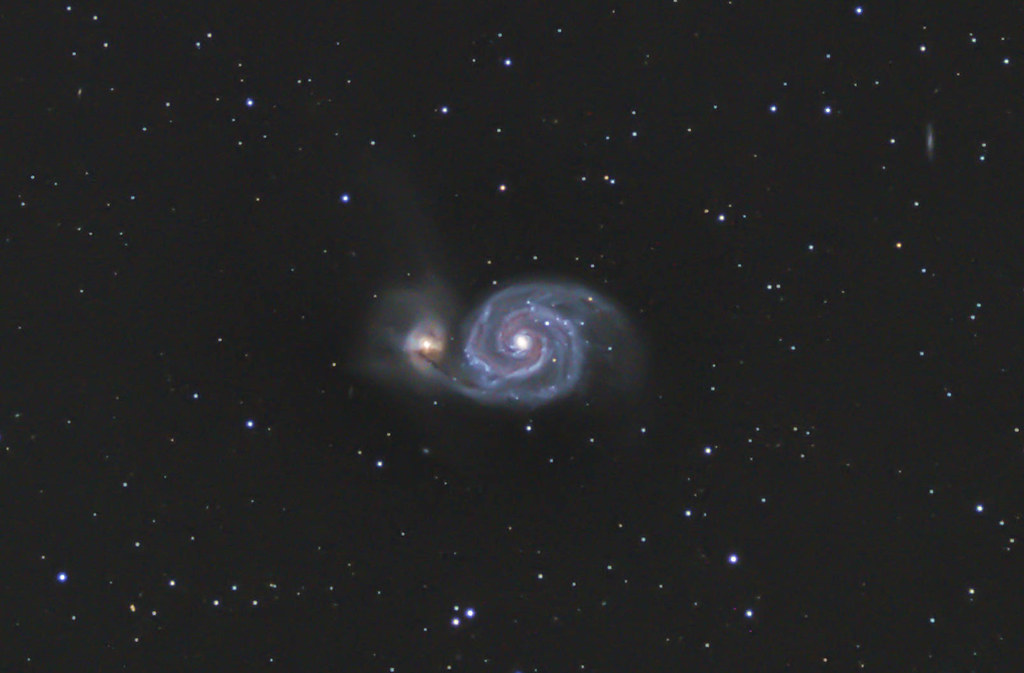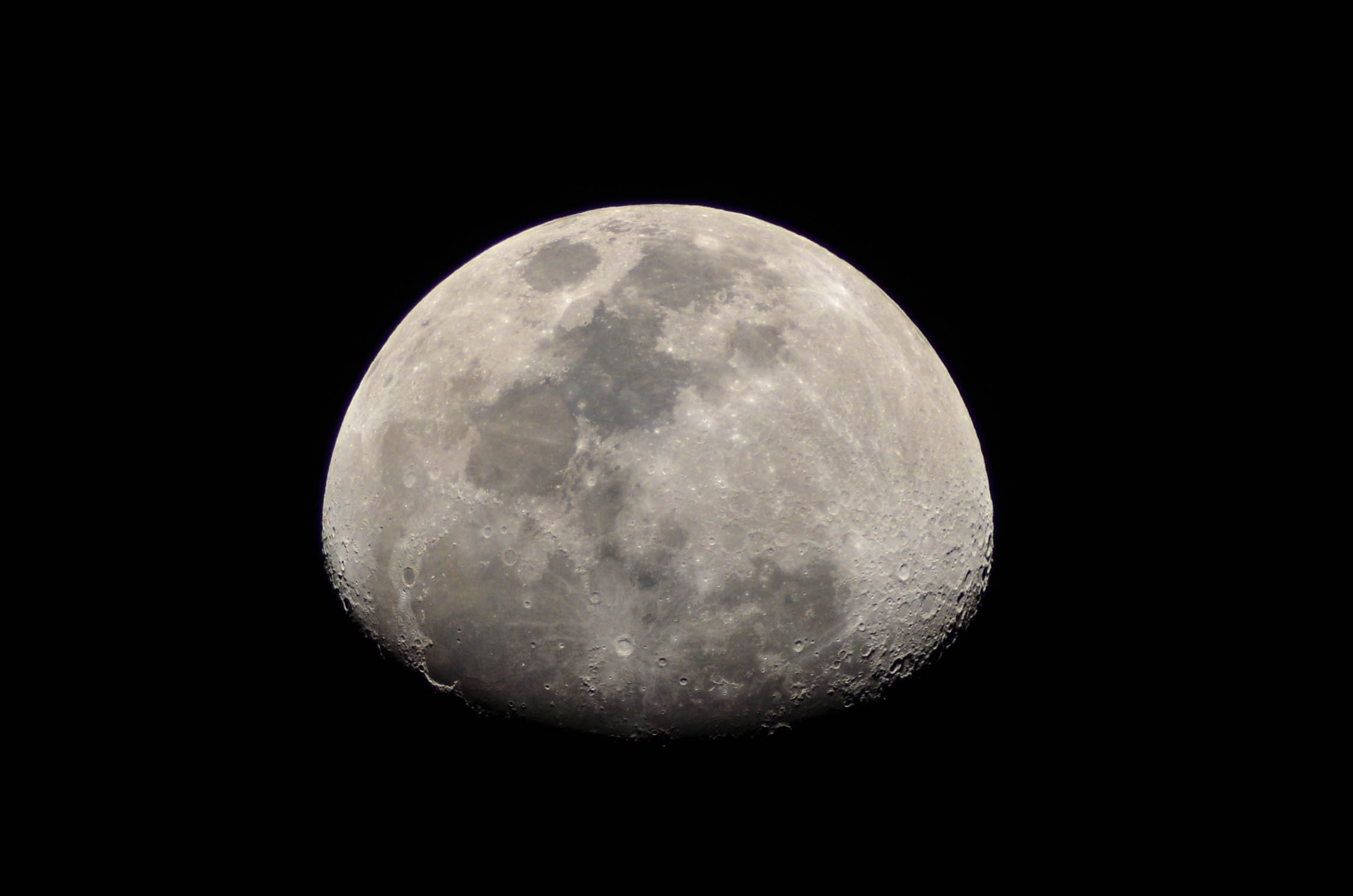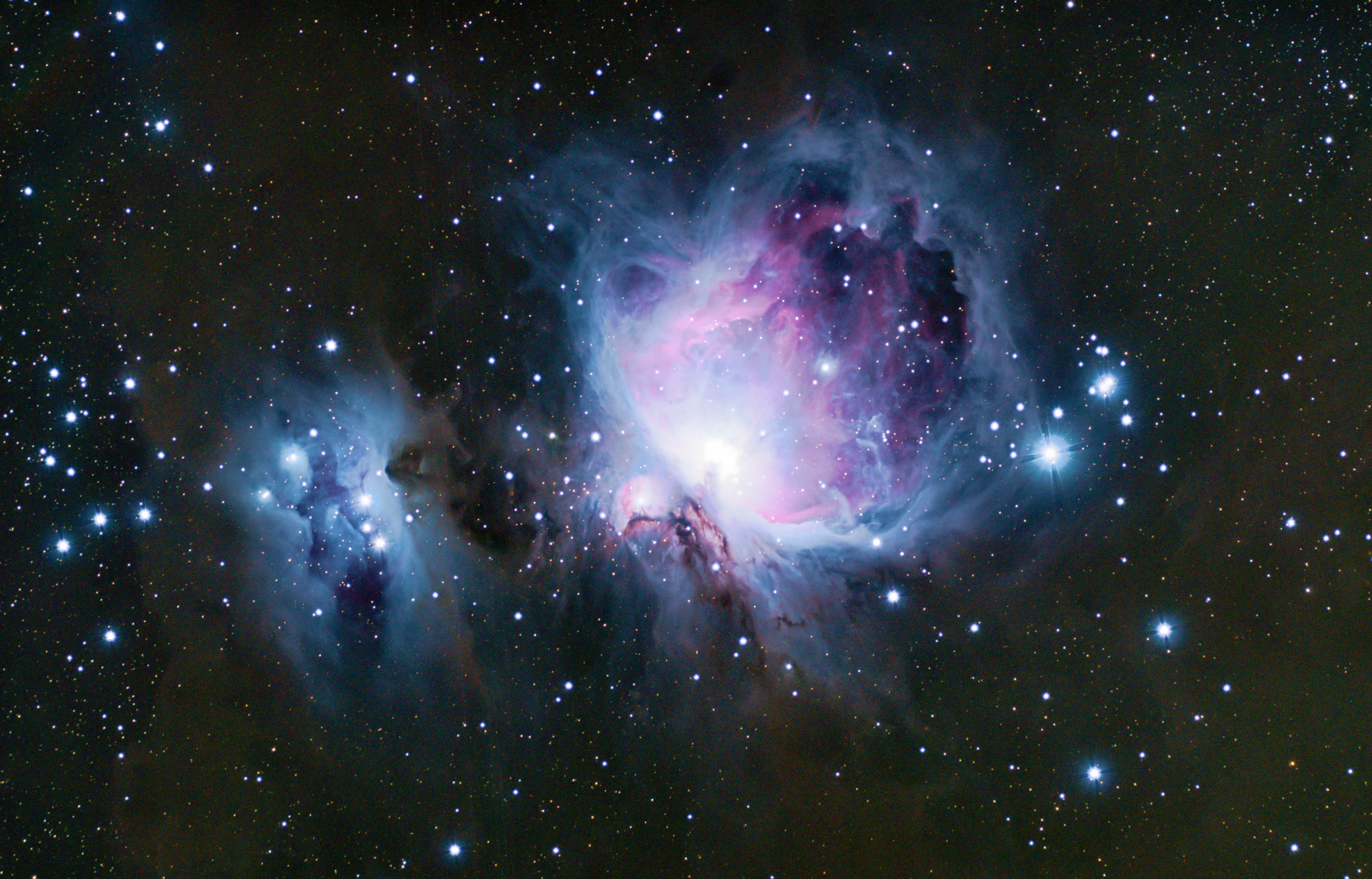Anybody still coming here?
Phil's Astronomy Blog
Astronomy and Astrophotography for the Beginner and Try-Hard Amateur!
Monday, October 11, 2021
Friday, April 13, 2018
Markarian's Chain in Virgo
My own Hubble View! These galaxies lie between 10 to 50 million light years away. How many galaxies do you see?
A pretty tricky part of the sky to image, really. You're utilizing almost your entire field of view with an 80mm scope, so dealing with all that comes with wide-field. This is the best iteration I have processed to date from two night's of imaging. Learned a lot, but have a way to go to get this the way I want it.
Image Details:
* Imaging Scope: Astrotelescopes 80mm ED Refractor
* Imaging Camera: Nikon D7000
* Guiding Scope: William Optics 66mm Petzval Refractor
* Guiding Camera: Orion Starshoot AutoGuider
* Mount: Celestron CGEM
* Exposures: 32 * 8 minute lights, 21 * 8 minute darks, 40 bias frames
* ISO 1000
* Aligned and Stacked in Deep Sky Stacker
* Post-Processing Dynamic Photo HDR, LightRoom and Photoshop.
A pretty tricky part of the sky to image, really. You're utilizing almost your entire field of view with an 80mm scope, so dealing with all that comes with wide-field. This is the best iteration I have processed to date from two night's of imaging. Learned a lot, but have a way to go to get this the way I want it.
Image Details:
* Imaging Scope: Astrotelescopes 80mm ED Refractor
* Imaging Camera: Nikon D7000
* Guiding Scope: William Optics 66mm Petzval Refractor
* Guiding Camera: Orion Starshoot AutoGuider
* Mount: Celestron CGEM
* Exposures: 32 * 8 minute lights, 21 * 8 minute darks, 40 bias frames
* ISO 1000
* Aligned and Stacked in Deep Sky Stacker
* Post-Processing Dynamic Photo HDR, LightRoom and Photoshop.
Monday, April 09, 2018
M51 Whirlpool Galaxy
A nice clear night last night until around 12:30 when clouds rolled in. Managed to get this image of the lovely M51 Whirlpool galaxy. It lies around 23 million light years away and it is interacting with a smaller galaxy (yellow~ish bulge to the left). Three supernova (star explosions) have been detected in this galaxy since 1994. There's more detail here but I think I'm pushing things with an 80mm scope.
Image Details:
* Imaging Scope: Astrotelescopes 80mm ED Refractor
* Imaging Camera: Nikon D7000
* Guiding Scope: William Optics 66mm Petzval Refractor
* Guiding Camera: Orion Starshoot AutoGuider
* Mount: Celestron CGEM
* Exposures: 15 * 8 minute lights, 9 * 8 minute darks, 30 bias frames
* ISO 1250
* Aligned and Stacked in Deep Sky Stacker
* Post-Processing Dynamic Photo HDR, LightRoom and Photoshop.
Image Details:
* Imaging Scope: Astrotelescopes 80mm ED Refractor
* Imaging Camera: Nikon D7000
* Guiding Scope: William Optics 66mm Petzval Refractor
* Guiding Camera: Orion Starshoot AutoGuider
* Mount: Celestron CGEM
* Exposures: 15 * 8 minute lights, 9 * 8 minute darks, 30 bias frames
* ISO 1250
* Aligned and Stacked in Deep Sky Stacker
* Post-Processing Dynamic Photo HDR, LightRoom and Photoshop.
Thursday, March 15, 2018
M81 and M82
The spring brings out some great galaxies. This is the first iteration of a long-term project I'll be working on with respect to these two galaxies.
M81 is on the right, lies around 11.7 million light years away and harbors around 250 billion stars. M82, on the left, is also called the "Cigar Galaxy" lies at about the same distance as M81. The two galaxies are seperated by about 150,000 light years.
Image Details:
* Imaging Scope: Astrotelescopes 80mm ED Refractor
* Imaging Camera: Nikon D7000
* Guiding Scope: William Optics 66mm Petzval Refractor
* Guiding Camera: Orion Starshoot AutoGuider
* Mount: Celestron CGEM
* Exposures: 9 * 8 minute lights, 9 * 8 minute darks, 30 bias frames
* ISO 1000
* Aligned and Stacked in Deep Sky Stacker
* Post-Processing Dynamic Photo HDR, LightRoom and Photoshop.
M81 is on the right, lies around 11.7 million light years away and harbors around 250 billion stars. M82, on the left, is also called the "Cigar Galaxy" lies at about the same distance as M81. The two galaxies are seperated by about 150,000 light years.
Image Details:
* Imaging Scope: Astrotelescopes 80mm ED Refractor
* Imaging Camera: Nikon D7000
* Guiding Scope: William Optics 66mm Petzval Refractor
* Guiding Camera: Orion Starshoot AutoGuider
* Mount: Celestron CGEM
* Exposures: 9 * 8 minute lights, 9 * 8 minute darks, 30 bias frames
* ISO 1000
* Aligned and Stacked in Deep Sky Stacker
* Post-Processing Dynamic Photo HDR, LightRoom and Photoshop.
Sunday, February 25, 2018
Waxing Gibbous Moon
The weather has been atrocious! Several cold fronts have come through central Texas over the last few weeks, so the observatory has been closed. The skies were clear tonight, so I grabbed a decent capture of the Moon.
Here's hoping next month is better. Galaxies are rising and I'm itching to recapture some old friends....
Here's hoping next month is better. Galaxies are rising and I'm itching to recapture some old friends....
Labels:
AstroTelescopes 80mm ED Refractor,
moon,
Nikon D7000
Wednesday, February 07, 2018
The Sword of Orion Region (2018 Attempt)
Obviously a fantastic part of the sky, imaged by many! I really wanted to get a lot of data of this region now that the observatory was up and running. After a few attempts, I realized that my stars were rather oblong during long exposure imaging. Couldn't really figure it out, so I hit the proverbial reset button: realigned the mount, rebalanced the mount with photographic equipment attached, re-installed new guiding software (PHD2), and started from scratch. Immediately saw better results with easier guiding (software could easily pick up guide stars) and could now get nice round stars. Also paid attention to focusing!
Anyway, the image below is a nice result!
Image Details:
Anyway, the image below is a nice result!
Image Details:
- Imaging Scope: AstroTelescopes 80mm ED Refractor
- Imaging Camera: Nikon D7000
- Guiding Scope: William Optics 66mm Petzval Refractor
- Guiding Camera: Orion Starshoot Autoguider
- Light Frames: 20*5 minutes @ ISO1250 for the overall region, 20*1 minutes @ ISO1250 for the core
- Bias Frames: 20
- Dark Frames: 10
- Stacked in Deep Sky Stacker
- Merged in Dynamic Photo-HDR
- Tweaked in Adobe Lightroom
Subscribe to:
Comments (Atom)




